
Princess Beatrice of the United Kingdom,, later Princess Henry of Battenberg, was the fifth daughter and youngest child of Queen Victoria and Prince Albert. Beatrice was also the last of Queen Victoria's children to die, 66 years after the first, her elder sister Alice.
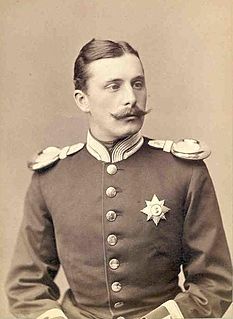
Prince Henry of Battenberg was a morganatic descendant of the Grand Ducal House of Hesse. He became a member of the British royal family by marriage to Queen Victoria's youngest child, Princess Beatrice of the United Kingdom. Through his daughter, Princess Victoria Eugenie of Battenberg, who became the Queen of Spain by marriage, Henry is a direct ancestor of current members of the Spanish royal family.
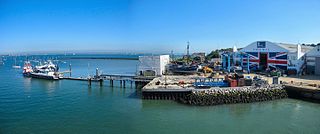
East Cowes is a town and civil parish to the north of the Isle of Wight, on the east bank of the River Medina, next to its west bank neighbour Cowes.

Princess Victoria Alberta Elizabeth Mathilde Marie of Hesse and by Rhine, later Victoria Mountbatten, Marchioness of Milford Haven, was the eldest daughter of Louis IV, Grand Duke of Hesse and by Rhine, and Princess Alice, daughter of Queen Victoria of the United Kingdom and Prince Albert of Saxe-Coburg and Gotha.

Lieutenant David Michael Mountbatten, 3rd Marquess of Milford Haven,, styled Viscount Alderney before 1921 and Earl of Medina between 1921 and 1938, was the son of the George Mountbatten, 2nd Marquess of Milford Haven and Countess Nadejda Mikhailovna of Torby.

Alexander Mountbatten, 1st Marquess of Carisbrooke, was a British Royal Navy officer, a member of the Hessian princely Battenberg family and the last surviving grandson of Queen Victoria.

Whippingham is a village and civil parish on the Isle of Wight. The population of the Civil Parish at the 2011 Census was 787. It is located 1+1⁄2 miles (2.4 km) south of East Cowes in the north of the Island.

Quarr Abbey is a monastery between the villages of Binstead and Fishbourne on the Isle of Wight in southern England. The name is pronounced as "Kwor". It belongs to the Catholic Order of St Benedict.
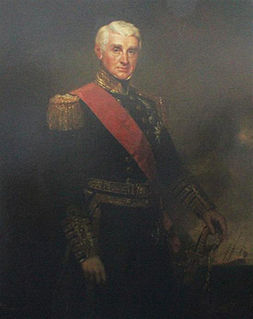
Admiral of the Fleet Sir Thomas John Cochrane was a Royal Navy officer. After serving as a junior officer during the French Revolutionary Wars, he captured the French ship Favourite off the coast of Dutch Guiana and then took part in various actions including the capture of the Virgin Islands from Danish forces, the capture of the French island of Martinique and the capture of the French archipelago of Îles des Saintes during the Napoleonic Wars. He also took part in the burning of Washington and the attack on Baltimore during the War of 1812.
Battenberg or Battenburg may refer to:
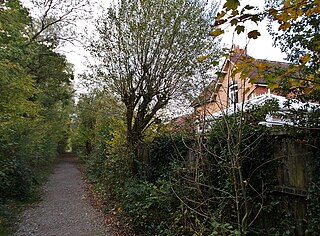
Whippingham railway station is a former railway station near Whippingham on the Isle of Wight, off the south coast of England.

Island Harbour Marina, on the Isle of Wight, UK, is a commercial marina on the River Medina in the small hamlet of Binfield. It is located approximately halfway between Cowes and the County Town of Newport. Visiting yachtsmen will find it just past the Folly Inn on the East bank. Being a relatively small marina, it best suits pleasure craft of up to 20 metres in length. The marina accommodates both annual berthholders and short-term visiting craft.
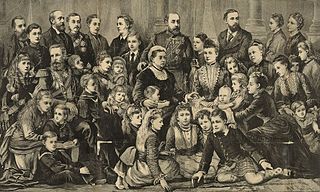
Queen Victoria, the British monarch from 1837 to 1901, and Prince Albert had 9 children, 42 grandchildren, and 87 great-grandchildren.

Northwood House is a country manor house in Cowes on the Isle of Wight in the United Kingdom. The current building dates back to 1799 and was built for the London businessman George Ward, remaining in his family for five generations. It is a Grade II listed building, said to have a ground floor area of around 15,000 square feet.

St Mildred's Church, Whippingham is the Church of England parish church of the village of Whippingham, Isle of Wight.

Irene Frances Adza Mountbatten, Marchioness of Carisbrooke, was born in London, England, the daughter of William Francis Henry Denison, 2nd Earl of Londesborough, and Lady Grace Adelaide.
Lady Iris Mountbatten was an English actress and model, and a member of the Battenberg/Mountbatten family. She was the youngest great-grandchild of Queen Victoria. She was also a niece of Queen Victoria Eugenie of Spain.

On the event of her wedding to Prince Henry of Battenberg at Saint Mildred's Church at Whippingham, near Osborne, on 23 July 1885, Princess Beatrice of the United Kingdom wore a wedding dress of white satin, trimmed with orange blossom and lace, the lace overskirt held by bouquets of the blossom entwined with white heather. There was lace on the pointed neck line, and on the sleeves, for the Princess was a lover of, and an expert on, lace. One of her most treasured possessions was a tunic of old point d'Alençon which had belonged to Catherine of Aragon. Knowing her daughter's love of lace, the Queen allowed Princess Beatrice to wear the Honiton lace and veil which she herself had worn on her wedding day. It was a very precious possession to the Queen, and Princess Beatrice was the only one of her daughters to be given the opportunity to wear it. Her veil was emblazoned with a diamond circlet with diamond stars, a wedding gift from her mother.
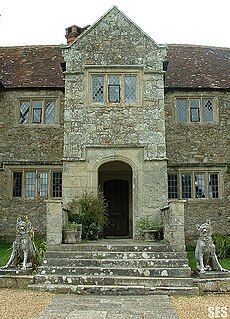
Arreton Manor is a manor house in Arreton, Isle of Wight, England. Its history is traced to 872 AD to the time of King Alfred the Great and his parents. It was left by King Alfred by his will to his youngest son Aethelweard. Once owned by William the Conqueror, as mentioned in the Domesday Book in 1086, in the 12th century it became part of Quarr Abbey and was used by the monks for over 400 years. In 1525, it was leased to the Leigh family. The manor was rebuilt between 1595 and 1612. Built in Jacobean style, it is in the shape of a "H". It is also widely known on the Isle of Wight in folklore for its paranormal activity, particularly the ghost of a young girl named Annabelle Leigh who was allegedly murdered at the manor by her own brother in 1560.
The Reverend Clement Smith, MVO, MA was a Canon of Windsor from 1902 to 1921.
















